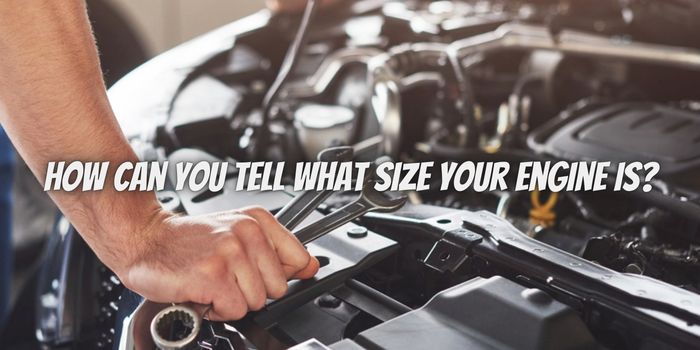Most of the time your exact engine size doesn’t matter much if you’re not into performance car stuff, but when you need replacement parts then it starts to matter a lot. Many vehicles have different engine options in a single model year, with different replacement parts needed for each. If you have trouble remembering your vehicle’s engine size offhand, you need to know where to look for it.
Look For Your VIN
You can get away with providing information from your VIN without needing to know your vehicle’s engine size. That’s because the information is coded in your vehicle’s identification number automatically. VINs are not randomly generated, they have specific codes in different digits. The tenth digit from the left is the beginning of your two-digit model year. The eight digit is the beginning of your two-digit engine code. Part store workers can use those codes to look up your vehicle’s engine size.
If you check the VIN on your registration or the corner of your windshield, then you can bring that information into the store. Using your registration makes it easy because any other information the clerk needs to look up will be on there. Of course, you can always go to a store with a free VIN lookup to avoid having to count digits to find codes. That service lets you look up all your vehicle information with a complete VIN.
Open Up Your Hood
If you’re comfortable checking out your engine, you can just look there. Those with automotive experience can often look at an engine and understand the size of it, but for everyone else, there is the fact that most automakers started putting the engine size on the block or the manifold at some point in the last few decades. Not every vehicle will have a prominent engine size displayed, but many do. That big 3.5L or 2.8L you see is the size, and it’s enough to let a store employee look up the auto parts you need.
Check Your Vehicle Information
Most vehicles have an information panel with another copy of the VIN, tire pressure recommendations, engine size, and additional information. Its exact location changes from car to car, but there are a few common choices for location.
- On the door or inside the door frame for one of the doors
- On one corner of the window along with the state-required VIN display
- In the spare tire storage compartment
Once you find this information panel, it is a useful refresher on your car’s basic needs you can consult when topping off your tire pressure or figuring out which oil to buy for your next oil change.
The Owner’s Manual or Handbook
Vehicles come with a thick book of information about their design and capabilities. This documentation includes maintenance rotation recommendations, information about different options like the stereo or air conditioning system, and specifications about the vehicle’s capabilities and performance. That means you should be able to find the engine size in your manual. That makes it easy to figure out the right model next time you need a catalytic converter replacement or any other part.




